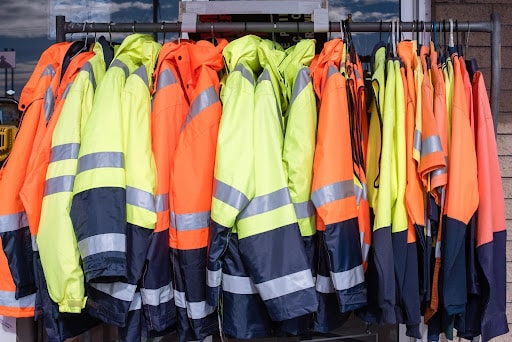Construction sites are bustling hubs of activity where countless workers engage in physically demanding tasks daily. The nature of the work exposes them to various hazards, making the need for proper work clothing of paramount importance.
On site safety encompasses several aspects, with protective clothing playing a vital role in safeguarding workers.
Table of Contents
Body Protection
Your torso needs protection, especially when working with sharp objects, heavy materials, or in hazardous environments.
Reflective vests are a common choice for many construction workers, as they serve a dual purpose – they protect the body and make the worker more visible, reducing the risk of accidents.
However, in situations where there is a potential for chemical exposure, specialized protective suits may be necessary to prevent skin contact with hazardous substances. Tough Duck is one of the most reckoned safety brands to opt for protective body apparel.
Cleanflow carries Tough Duck work clothing, ensuring that workers have access to a wide range of safety gear to enhance their overall protection on the job.
Foot Protection
Foot injuries are prevalent on construction sites due to the heavy machinery, tools, and materials that are often present. Wearing appropriate footwear is crucial to prevent accidents. Steel-toed boots or shoes are the standard for foot protection in construction.
These reinforced shoes provide a sturdy barrier against heavy objects falling on the feet and are designed to prevent crushing injuries.
Furthermore, non-slip soles are essential to prevent accidents on slippery surfaces, especially in adverse weather conditions.
Ear Protection
Construction sites can be extremely noisy environments, with the constant hum of machinery, power tools, and other equipment. Prolonged exposure to such high levels of noise can result in hearing loss or other hearing-related problems.
Ear protection, such as earmuffs, is essential to mitigate these risks. Workers should use appropriate ear protection whenever they are in noisy areas or when operating loud machinery.
Hand Protection
Hands are constantly engaged in construction work, making them susceptible to various risks, including cuts, abrasions, and chemical exposures. Protective gloves are essential in guarding against these hazards.
The type of gloves required will depend on the specific job and the materials being handled. For example, heavy-duty leather gloves are suitable for tasks involving rough materials, while chemical-resistant gloves should be used when dealing with hazardous substances.
The key is to ensure that the gloves fit properly, allowing dexterity and grip while still providing protection.
Head and Neck Protection
Head injuries can be catastrophic, and neck protection is also crucial on construction sites. Hard hats are a mandatory piece of safety gear, as they shield the head from falling objects, impacts, and electrical hazards.
It is essential to choose the right type of hard hat for the job; for instance, construction workers working near electrical sources require hard hats with electrical insulation.
Furthermore, accessories such as chin straps should be used to secure the hard hat in place, preventing it from falling off during an accident. You can also get custom hard hats made for you or your company to at least give a little flair while on the job.
Leg and Knee Protection
Knees and legs endure a considerable amount of stress on construction sites, often due to kneeling or the risk of falling objects.
Construction sites and industrial workplaces pose various hazards to these vulnerable body parts, including sharp objects, heavy materials, and repetitive strain. To mitigate these risks, workers should wear knee pads and reinforced work pants.
Knee pads provide cushioning and prevent injuries during kneeling or bending tasks, while reinforced pants offer added durability and protection.
Ensuring that employees have access to these essential protective measures not only safeguards their well-being but also promotes productivity by reducing the risk of work-related injuries and discomfort.
Sun Protection
Sun protection is a vital component of work clothing safety, often overlooked in outdoor professions. Prolonged sun exposure can lead to sunburn, heatstroke, and long-term skin damage.
Workers should wear wide-brimmed hats and UV-blocking sunglasses and apply high-SPF sunscreen. Employers can further support safety by providing shaded rest areas and promoting frequent hydration.
By prioritizing sun protection, not only do workers avoid immediate health risks, but they also reduce the likelihood of heat-related illnesses, contributing to a safer and healthier work environment.
Proper sun protection measures ensure that outdoor job sites are both productive and safe for workers.
Work clothing safety on construction sites is not a matter of choice; it is an absolute necessity.
By ensuring that workers are equipped with the appropriate protective gear and are educated about its proper use, employers can create a safer environment for their employees.
Construction sites should be places where productivity and safety go hand in hand, with work clothing safety being a top priority to ensure the well-being of all involved.





